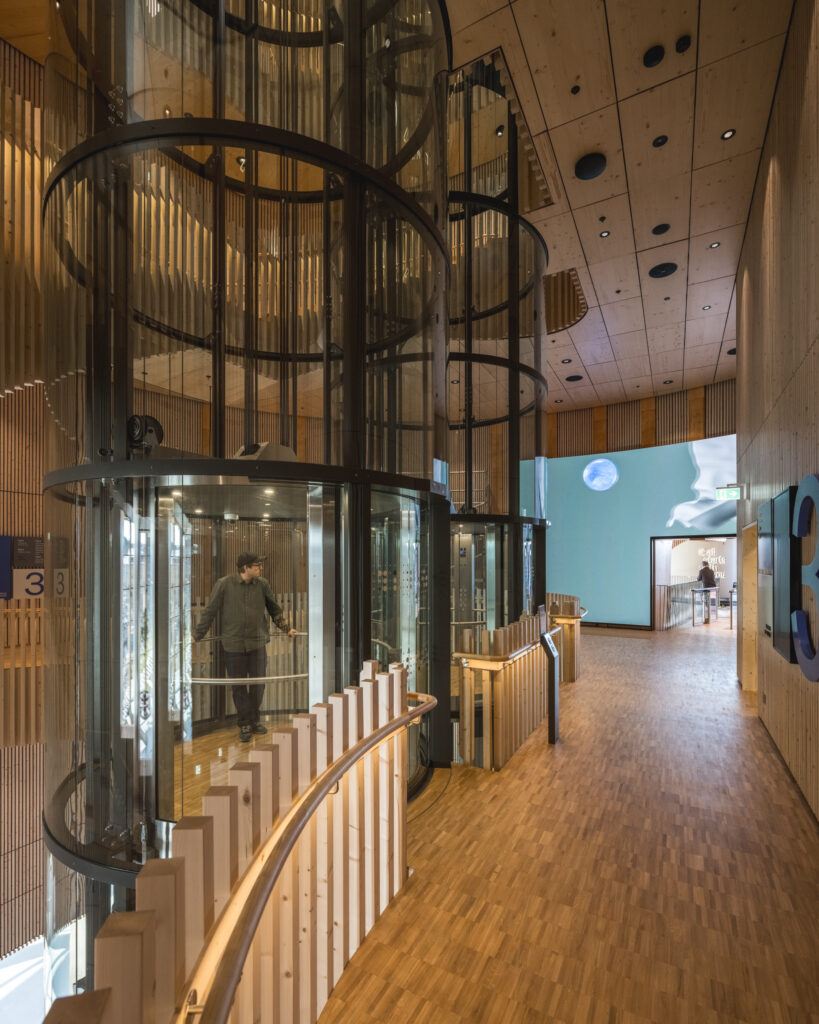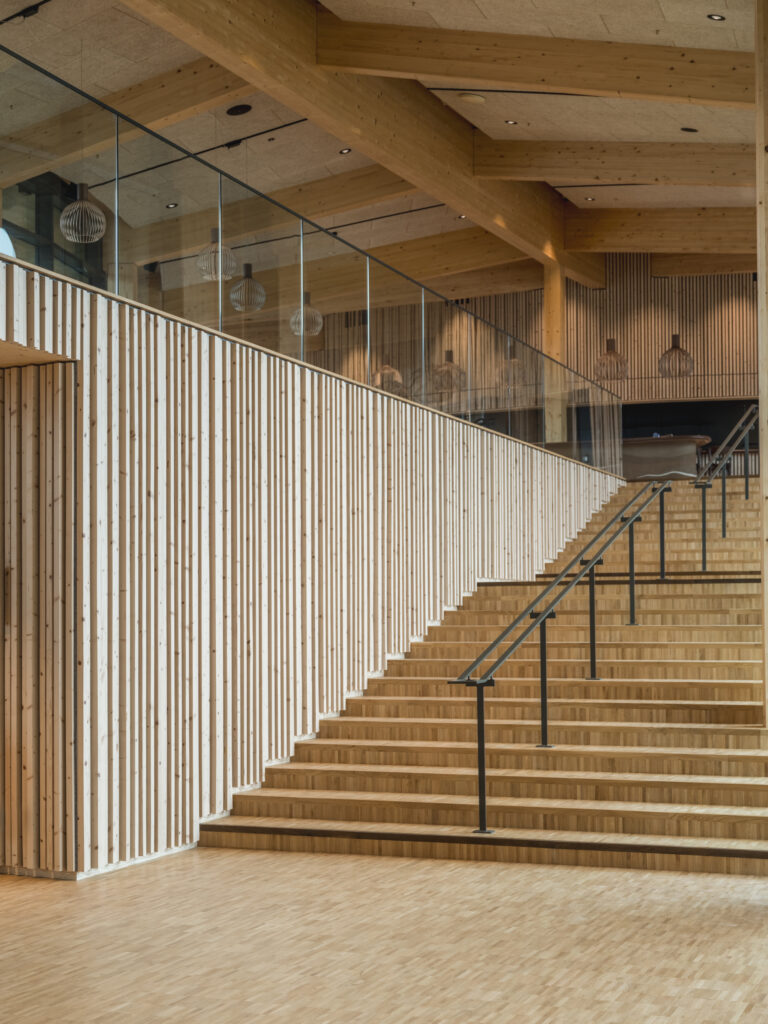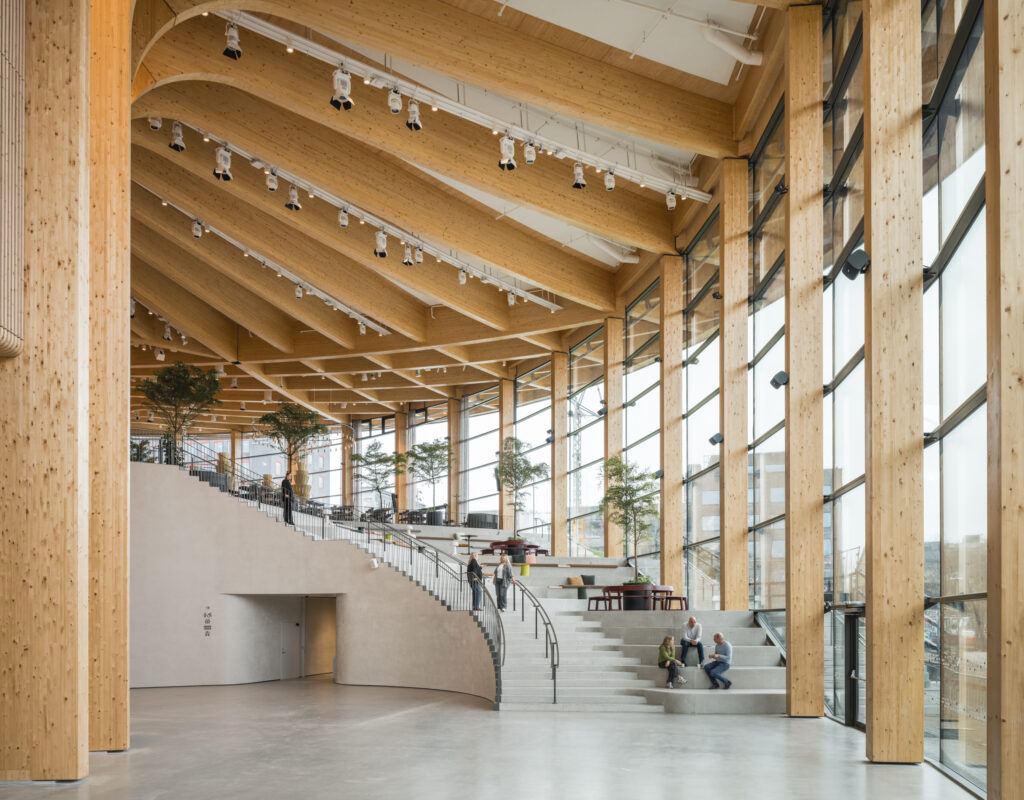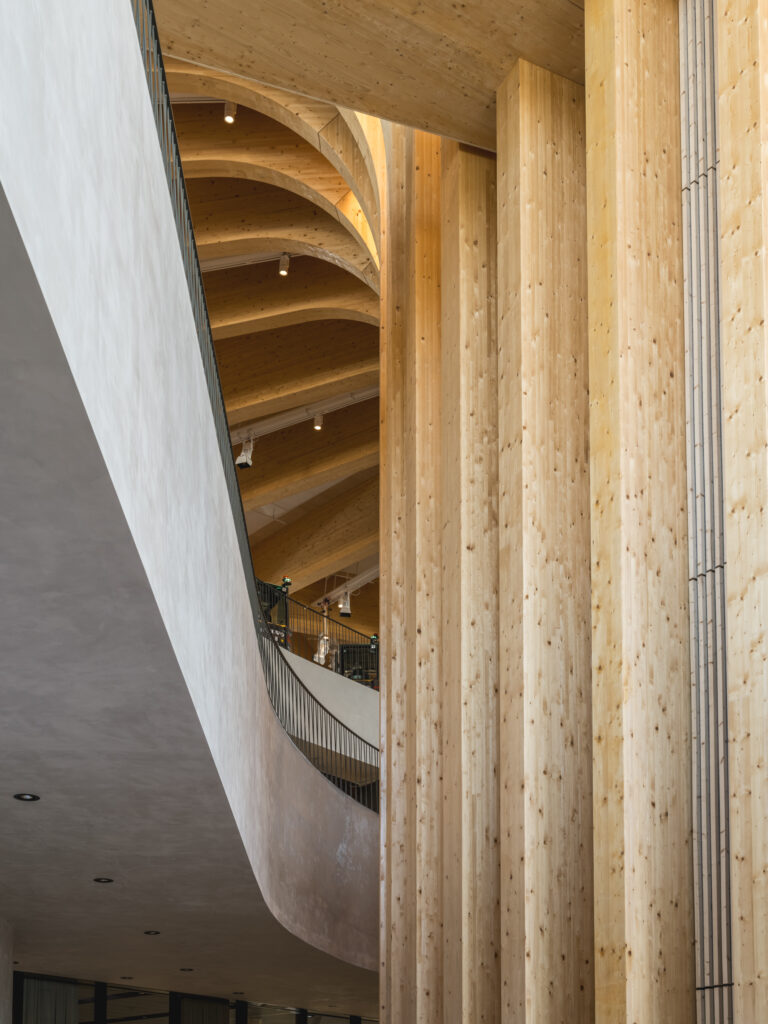
Volvo Cars and Volvo Group just opened the doors to World of Volvo — a 22,000 m2 experience centre, including a 4,500 m2 exhibition area — in Gothenburg. Designed by Henning Larsen Architects, the building consists of 2800 tons of wood, sourced from south of Europe and Sweden, and is held by 2300 large wooden beams (the three largest ones are 34 metres each) and 2700 cross-laminated timber (CLT).
— It’s a meeting place that centres around people and ideas; how we all are connected and designed for human needs and behaviours, says Andreas Malm, Head of Brand. It aims to further broaden the brand footprint and bring our values forward to a larger and new audience.
— It will also be a place where visitors can experience the human-centric principle we have, laid out by our founders, which says to use technology to improve people’s lives. By centering the space around the human body, mind, and interconnections, we enable a platform for innovation to come together. The exhibitions include iconic vehicles, real-life stories, and extraordinary interactive experiences, but also a new restaurant and a space for cultural events, seminars, and talks.


According to Martin Stenberg Ringnér, Associate Design Director at Henning Larsen Architects, the design is inspired by Volvo’s Swedish heritage with nature, the forest, and ”Allemansrätten” (The Right of Public Access — a principle, protected by the law, that gives all people in Sweden the freedom to roam free in nature) as a basis.
— This also made wood an obvious choice of material, he says. The three tree trunks that make up a large part of the supporting structure represent the tree of knowledge and the green sedum roof is the tree’s crown. The concrete at the foundation is the rock on which the trees grow. The fact that large parts of the building, apart from the exhibitions, are accessible to the public free of charge also has a connection to the Allemansrätten.
— The expansive round structure encourages visitors to create their own journeys both indoors and outdoors, regardless of whether they hold tickets to the exhibition inside. Surrounded by a thriving landscape that extends onto an accessible roof, the building embraces the regional landscape, in form, materiality, and culture, bringing a native piece of Swedish nature to the middle of Gothenburg.
— We won the World of Volvo project following an interview competition in 2018, which means that the design was created in close collaboration with Volvo. When the architects presented their vision to the client, they hardly dared to hope for a yes. The idea was more than usually bold — to build an extremely complex wooden structure in several floors, designed as three tree trunks with a giant cantilevered tree crown — and in addition a park environment and pavilion on top of it. But Volvo liked the idea. And it has now become World of Volvo.


What was the most challenging when creating it?
— Not long ago, working with timber on this scale was hard to imagine. The building industry is on a path of change. It’s just amazing that we could make this happen, from initial sketches that were all free form and had to be rationalised to now seeing it unfolded into life.
How have you worked with sustainability and innovative solutions?
— The entire wooden structure was designed as a digital script using the 3D visualising programs Rhino and Grasshopper. This script was what drove the process and dialog between architects and engineers defining spans, dimensions, and structural stability as well as the overall aesthetics of the wooden structure. Working closely together with the script has enabled us to have much larger spans than what is normally feasible in wooden construction. The largest span is approximately 55 metres without structural support.
— All wooden elements that could be sourced and produced locally such as the CLT slabs, which come from Swedish manufacturers. Timber is a standout in sustainability, especially when responsibly sourced. Its role in carbon storage and reliance on renewable materials has become crucial amid the growing focus on reducing emissions in construction. Beyond these advantages, its natural warmth is making a comeback in modern architecture, creating inviting spaces. Plus, with benefits like fast construction, low thermal conductivity, and lightweight design, it’s a smart choice for cutting-edge projects like World of Volvo.

You mentioned some but how can World of Volvo serve as a good example for constructing a new building in 2024?
— The use of timber embodies a return to a most traditional of building materials in the Scandinavian context but does so through decidedly modern methods and approaches.
— A flexible computational workflow integrated from the very early phases made it possible to experiment with the height of the building, the geometry of the roof, the radius of the three inner circles, and the number of columns while evaluating the structural implications of these choices together with the manufacturer.
— This advanced digital collaboration resulted in decisions that are informed by the material itself, allowing us to optimise material use without compromising on the concept.
— The main reason behind the structure and the long spans is to make as open and big spaces as possible to create as high a level of flexibility making sure that needs and wishes for exhibits can change over time. A variety of different spaces is created give variation in the way you can communicate to visitors. For example, the project also contains a couple of black boxes where more immersive experiences can be exhibited to create different experiences for visitors. These are ideal for creating temporary exhibits.

Volvo’s Andreas Malm describes the space as a house of innovation and creativity.
— Through the exhibitions, visitors will experience our safety legacy as well as the technology used to enable safety features in our vehicles, such as LiDAR sensors and also the E.V.A (Equal Vehicles for All) initiative, which we launched back in 2019. Our Accident Research Team has compiled real-world crash data since the 1970s to better understand what happens during a collision — regardless of size, gender, or body shape — to protect both men and women equally. Through the E.V.A. Initiative, we were for the first time making our safety knowledge easily accessible in a central digital library which we urged the car industry to use, he says, adding,
— To help create a world with more care and consideration, it’s necessary for people to have a meeting place where they can feel free to come together to co-create, get inspired, and collaborate.



